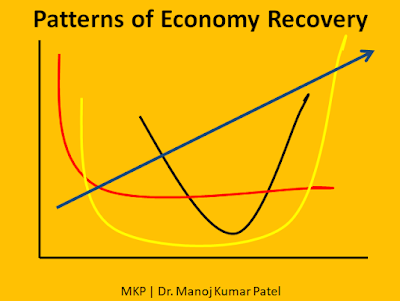National Development through Quality Improvement in Indian Context
National Development through Quality Improvement in Indian Context
Dr. Manoj K Patel
Nomadic
community began its path to industrialization when people in professions of glovers,
tailors, fletchers, barber-surgeons, tanners, needle makers, turners, skinners,
butchers, bakers, and brewers started planned production and maintained inventory
for their input materials and finished goods, basically for earning their own
livelihood in a systematic and planned manner. Subsequently, craftsmen of
identical kind and type started congregating, and they started living and
working in the same street or localities for mutual benefits like bringing down
hardship, efforts, and cost of production for identical produce. This process
then thus gave rise to business concepts. This was the first visible phase on growth
of civilization and industrialization.
Consciously,
here in this article, we are keeping only the industrial and innovative
revolutions in scope for the present discussion. Religious and civil revolutions
are kept at bay so as to keep the present discussion focused.
So, coming back
to the mainstream, when people started inhabiting nearer to natural resources
like rivers and plain lands; the concept of villages followed by states and nations
came into formation. Boundaries are drawn and thus nations formed. Each nation
developed its own production and manufacturing. Systems and procedures got
developed. Governments started giving training and developments to its people
for the holistic development of nations in terms of economic growth. Financial
structures developed and nations focused to manufacture better quality of
products compared to others so that they can sell it to other nations and
develop economic progress of their own nations spiraling further growth. So the competition got set in.
Continuous
developments in the areas of the populace then gave rise to regions that outperformed others in the form of excellence in their produces. Countries like
Japan, German, South Korea, and now; undoubtedly the best and fastest; China
incessantly grew faster than the speed of adoption of their innovations by the
consumers. Innovative products are getting produced for the masses at the speed
of thought. Countries like India are trying its best to keep the pace with
China but in reality are not able to be anywhere nearer to it. Even copy-pastes
have not become possible for Chinese products. China is now spearheading innovations
and the implementation of innovations in quick cycle times? Be it in road
constructions in most un-accessible terrains, train lines in glacier-covered
areas, fireworks, steel production, toys for children for all the countries,
mining machineries, power plant machineries, railway networks, electronic
products, and what not. The challenge China is giving to the entire world in
each and every front is truly admirable. And now whether a country accepts it
or not, China’s innovation to implementation to commercialization is simply
unbeatable, at least as of now.
Language is no
barrier to innovation and making business successful. Advancement and
innovation understands only the language of brain cells and attitudes both of
which are totally intangible internal life processes. While China is galloping
in product innovations and business successes we are not able to do so and
mostly we are busy in preparing and conducting class room case studies that
where we are and how we would catch up with the pace of China. We are highly
expressive in terms of vocabulary use and very skilled in camouflaging our limitations
through rhetoric. On the contrary Chinese, South Koreans, and Japanese are
silent in nature and they use simple words to express themselves and their
products. In fact quality of their products speaks for them. Words are not
required to be used. They are focussed. I shall narrate a small incident
encountered by me. Last year, I was on a visit to a fertilizer manufacturing
industries in South Korea. As soon as the representative received me in the
Incheon airport and we were voyaging towards their factory, as a matter of fact
I asked general questions like how is their relationship with the North Korea
and the US. Very hesitantly my S Korean companion replied something and soon
added saying that – could we instead discuss business.
Such is the
FOCUS for work and business for them and the point I admired that only because
of such needle point focus, they are in a position to produce better quality
fertilizer than us in India who is trying to buy it from all the way S Korea.
Cost competitive
and efficient Coal base Power Plants are supplied to India with technology,
technical know-how as well as plant and machineries. It is another example of
quality and technological superiority proved with Chinese products.
No comparison intended of course, but introspection is required as
to where and why we are losing the pace which basically began for the entire
human race at the same points of time throughout the globe. Japan superseded
with respect to quality and quality concepts, not only in classrooms but in
workplaces. We in our countries are still struggling to put concepts like 5S
and Kaizen as an industrial culture. There are some aspects which we need to
embrace very quickly either by choice or may be by compulsion to keep ourselves
in the sphere of visibility. We need to strictly work on: innovation, team
work, R&D, eliminating complacency, eliminate classroom seminars with
workplace trainings, and minimum good shop floor practices like 5S and Kaizen,
both in word and work. Quality first and manufacturing next, and finally both
quality and quantity together or NO QUALITY NO PRODUCTION ought to be our national
Indian agenda.



Comments
Post a Comment